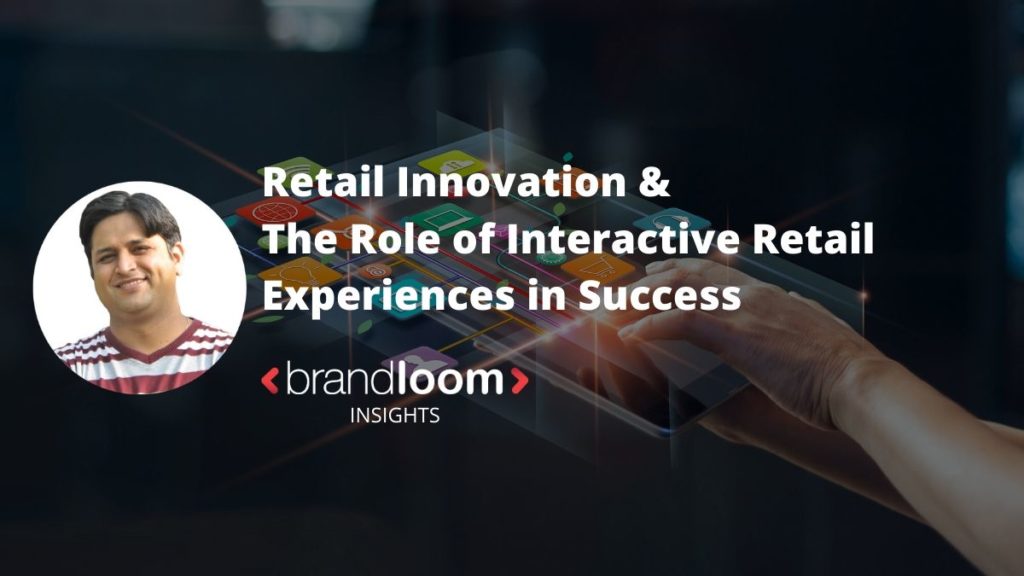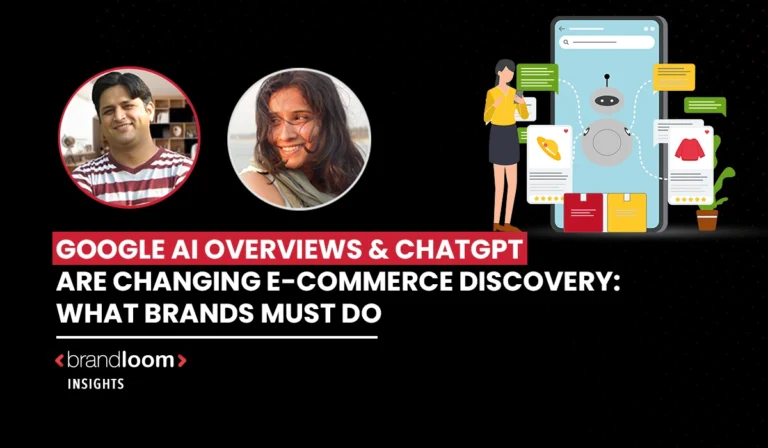In order to enhance customer experience, several brands are innovating with interactive retailing coupled with Social Media as a retail innovation. In this article, we will be sharing such retail innovations and their role in enhancing customer experiences.
What is Interactive Retailing
Interactive retailing means using technology in unique ways to engage customers in retail outlets. Many stores across the world are experimenting with this.
For example, Virgin Holiday offers its customers a “demo” of what their vacation will feel like. They offer a spa, let them test out the economy and business class flight seats and check out some other products in-store. This gives the customers an immersive experience and makes the brand memorable to them.
Similarly, toy retailer Hamley’s creates an immersive experience in some premium locations. For example, in Moscow, half the store is modelled like an amusement park with different zones like an enchanted forest or motor city. Children can explore these spaces, look at big models of lego rockets or other toys. This means they can see their favourite toys in action, discover new toys and games, and have every reason to look forward to the next store visit.
How popular is interactive retailing as a retail innovation?
All over the world, brands are experimenting with interactive retailing. Fashion retailers like Bloomingdales, for example, have virtual fitting rooms in some stores where customers can check out the fit of different sizes and items on their live image.
In India too, it is slowly gaining grounds. For example, if your location is on, and you are near a store, it can send you a message about some exclusive offer or promo code or something exciting they can experience in the store. This makes the customer curious about visiting the store.
For example, you have organized a kids event in your store – like a drawing competition. If you can see that a customer is nearby, you can send them a message about what is going on, and invite them to the store.
Why go for interactive retailing?
As we know, the customer today has evolved, and with technology permeating every part of our lives- their way of interacting with brands has changed, and so have their expectations.
So it makes sense that if you want to get an edge over competitors and build up a loyal customer base, you should give your customers unique experiences that will hook them in. We should also understand that customers want personalized services, and interactive retailing is a great way of giving them just that.
Immersive experiences not only make the brands memorable, but they also prompt visitors to talk about what they did with their peers. This helps you reach out to a wider audience. With smart interactive programmes, you can also manage your resources efficiently.
For example, Nike has crafted an experience where the customer may not even need to interact with staff. A customer can check out some shoes online, and bookmark some models they would like to try out. They can then go to the store, where they can check out a locker allotted to them. They can open the locker via their cellphones, and try on their shoes.
Then, they can select the ones they like and do a self-checkout. This, on one hand, appeals to those customers who like to explore a store by themselves, on the other hand, it also does not require much interaction with the staff, who can be deployed elsewhere. Smart displays that showcase your product catalogue do not require breaks, so it makes sure that they are available for the customers all the time.
Interactive retailing is effective in giving the customers a seamless brand experience where the customer can travel both online and offline before making a purchase decision. For example, interactive displays help customers check out a product virtually before buying it. Similarly, a customer may check out a physical product in the store and then buy it online.
Likewise, with interactive retailing and using unique displays, you can also get customers to customize products. For example, the brand Build-A-Bear gives kids the chance to design their own teddy bears via interactive touch screen stations. They can choose the colour, design, material, etc and create their own toys.
Smart displays can also show they other products or even allow them to self-checkout, which adds to the customer’s convenience. Using technology like virtual reality, you can heighten their brand experience. Similarly, you can get your customers to form an emotional attachment with your brand. For example, if you have a charity drive, you can have displays showing your customers how they have contributed to the cause and helped people.
What role can social media play in it?
It is no brainer that social media plays a big role in today’s market, and it is strongly recommended that brands interact with their customers on social media. You can always promote or publicize whatever special attractions or events you are organizing in your store on your social media platforms.
- Like we talked about before, if you see a follower’s location near your store (or even checking in) on social media, you can send them some exclusive promo codes that they can redeem at an in-store purchase.
- Likewise, you can send them personalized invites for your in-store events based on their location.
- More importantly, ensuring a good and unique brand experience for your customer prompts them to talk about it on social media. If you offer some unique interactive retailing experience that they find interesting, they will recommend and talk about it on their social media platforms. This means that your customer is acting as a brand ambassador to his or her social media circle. This helps you reach out to a wider audience.
- When a customer can get an in-store demo or try out something inside the store, they will talk about it on social media. This builds up your brand reputation and trust among your target audience.
- When people start talking about your unique in-store interactive experiences, this creates a brand story. Ultimately- the best brand stories are those which talk about authentic experiences with the brand.
- The data you gather from your in-store interactions or social media can be used to improve your offerings. You can use the feedback you receive on your social media pages to improve your in-store programme.
- You can also gather a local following and help your store become a local hotspot by publicizing it on local/community social media pages.
How to bring in the social crowd with retail innovation?
Interactive retailing prompts people to talk about their experience so if you introduce unique techniques in store, you are already creating a buzz on social media.
- You can make your store design more “Instagrammable”. This prompts people to talk about your store more.
- Similarly, you can encourage your customers to talk about your store or post selfies from inside the store and in turn, let them avail special discounts.
- As told before, you can use your customer’s geotagged location to your advantage.
- If you offer good interactive experiences, you will create a buzz and your social media following and presence will also expand.
- You can also give a boost to your programme by asking social media influencers talk about it.
- Use hashtags and geotags to publicize your offerings.
- Involve the local crowd, and they will spread the word on social media and help you reach out to customers across geographies.
How does it benefit you?
- Needless to say, when you offer interactive, unique experiences, you will see an increase in footfall.
- When the customer is satisfied with the brand experience, they will talk about it on social media and among their friends, which improves your brand reputation.
- Interactive retailing offers personalized experiences, and this has shown to impact revenues positively. For eg, the Build-A-Bear initiative showed a 30% increase in earnings after they implemented their design touch screen for kids.
- This definitely gives you an edge over competitors
- It helps you gauge your customer’s reactions better, and you can use that feedback to make tweaks in your products or marketing strategy.
- Using smart technology helps you use manpower more efficiently.
- When you let customers try out your products- like Hamley’s letting children explore and play in their stores- they are more likely to make a purchase.
- By allowing customers to customize their products, you build up brand loyalty with them. Satisfied customers will come back.
- The data you gather from your in-store interactive devices can be harnessed to make a more effective marketing strategy.
- If you can incorporate social media effectively, you can do targeted shopping across multiple platforms. For example, if you know your customer’s birthday from social media, you can send them personalized QR codes that may give them some special discounts or some free gifts in-store.
- Interactive retailing gives you the advantage of displaying and selling your products to your customers across multiple channels, thereby blurring the offline-online divide and creating a seamless brand experience for your customers.
What scope does interactive retailing have in India?
As we said earlier, India is only waking up to the possibilities of interactive retailing. India has a thriving retail market, and if you can stand out by offering unique brand experiences, you will create a niche for yourself and build up a loyal customer base. Since it is not much in vogue in India, you can be a pioneer. We don’t have to tell you the advantage that gives you over others.
Not only is there scope for generating revenues, but it also adds prestige to your brand. If you can use social media to your advantage, you can also strengthen your presence online and reach out to a wider audience. Ultimately, brands are all about storytelling. So if you offer unique experiences, it will add to your brand story, and help customers form an emotional connection with your brand.
What do you need to enable this?
- Efficient deployment of technology
- Management of resources – so that you don’t go bankrupt after your first attempt
- Understanding of what technology/format will work for your brand and product
- Innovative ideas and designs that will engage your customers
- Regular innovation so that your brand does not go stale
- A strategy that leverages social media to your advantage
What should you do?
- Know the market and your target audience. Whatever interactive retailing experience you design should address customer expectations, and that cannot happen unless you know your customer.
- Understand what offerings will suit you and at what scale. You need a data-based, unbiased audit. Design what will work for you, and don’t blindly ape someone else.
- Chalk out a solid marketing and branding strategy that will help you reach out to your audience across multiple platforms.
- Engage with your customers across all platforms, and use the information you gather to your advantage.
- Keep innovating and updating regularly.
- Keep track of your ROI.
- Chalk out a steady plan that leads to long-term, sustainable growth.
Who can help you?
- If you think that you need help in this area, you need to find an expert who can give you a plan.
- Find an agency or expert who can help you create seamless and unique experiences for your customers.
- They can also help you with properly managing your resources, and make sure that you get solutions that work for YOU.
Conclusion
Interactive retailing is gaining popularity, and you should get on with the times. You can build up your brand story and cement your reputation if you can give your customers unique in-store experiences. Interactive retailing helps you reach out to and sell across multiple platforms. It also leads to improved revenue generation. Social media can play an important part in your interactive retailing strategy. However, you need to understand what solutions will work for you. You must have a sustainable plan in place that works seamlessly. You must find a good advisor or expert who can help you design unique experiences, innovate your offerings, better your services and harness your resources effectively




